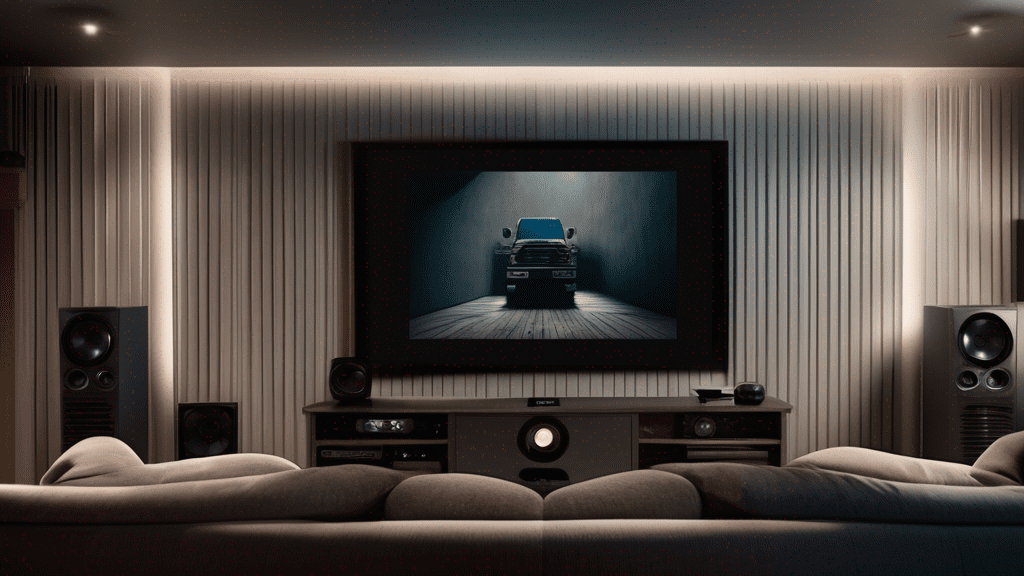When setting up a home theater, one essential component that often comes to mind is the subwoofer. A subwoofer’s deep, booming bass can significantly enhance the audio experience, immersing you in the action-packed scenes of your favorite movies. However, you might be wondering if it’s possible to have a home theater without a subwoofer.
In this article, we will explore whether can you have a home theater without a subwoofer and the advantages and disadvantages of omitting a subwoofer from your setup.
We will also discuss alternative options, provide tips on optimizing your home theater without a subwoofer, and answer common queries. So, let’s dive in!
The answer to the question depends on your preferences and expectations. It’s possible to have a home theater without a subwoofer. However, it’s essential to understand a subwoofer’s role in the overall audio experience.
While the absence of a subwoofer may not render your home theater setup useless, it can significantly impact the quality and depth of the low-frequency audio reproduction.
Also Read: Do Subwoofers Need Box
The need for a subwoofer in a home theater setup depends on several factors, including personal preferences and the type of content you enjoy.
A subwoofer adds richness and depth to low-frequency sounds, particularly those associated with explosions, rumbling thunder, or powerful musical basslines. It allows you to feel the audio as much as you hear it, creating a more immersive experience.
However, if you primarily watch dialogue-driven content or have limited space or budget constraints, you may consider alternatives or adjustments to your setup.
- Enhanced audio immersion and realism
- Rich and powerful low-frequency sound reproduction
- Improved overall sound quality and clarity
- Relieves strain on other speakers in the setup
- Adds depth and impact to explosions, music, and action sequences
- Weaker and less impactful low-frequency sound reproduction
- Potential lack of depth and realism in audio experience
- Main speakers may struggle to reproduce low frequencies, leading to distortion
- Limited ability to fully experience the intended audio effects of movies and music
- Reduced overall audio quality, particularly in bass-heavy content
If you decide not to include a subwoofer in your home theater setup, alternative options exist. One option is to invest in full-range speakers that can reproduce a broader range of frequencies, including low-end sounds.
These speakers are designed to handle a wider spectrum of audio, including bass frequencies, and can provide a satisfactory audio experience without a dedicated subwoofer.
Another alternative is using soundbars or sound bases incorporating built-in subwoofers or simulated bass technology. While these alternatives may not match the performance of a dedicated subwoofer, they can still enhance your audio experience.
If you decide to set up a home theater without a subwoofer, here are some tips to optimize your audio experience:
Look for speakers that can handle lower frequencies effectively to compensate for the absence of a subwoofer.
Experiment with speaker placement to maximize bass response. Placing speakers near walls or corners can enhance low-frequency performance.
Optimize your room’s acoustics by adding sound-absorbing materials or using bass traps to control sound reflections and improve bass reproduction.
Fine-tune the equalizer settings on your AV receiver or audio system to emphasize lower frequencies and compensate for the lack of a dedicated subwoofer.
Whether it’s OK not to have a subwoofer in your home theater setup depends on your preferences and priorities. If you primarily consume dialogue-driven content and have limited space or budget constraints, you can still enjoy a satisfactory audio experience without a subwoofer.
However, it’s important to note that a subwoofer can significantly enhance the overall audio immersion and depth, particularly for action-packed movies and music genres that heavily rely on low-frequency sounds.
While surround sound systems typically include a subwoofer to handle low-frequency sounds, it’s possible to set up a surround sound system without a subwoofer.
However, with a subwoofer, the low-frequency effects in surround sound may be more pronounced, affecting the overall audio experience.
It’s recommended to consider alternative options or adjustments to compensate for the absence of a subwoofer, such as using full-range speakers or soundbars with built-in subwoofers.
Yes, it’s possible to use speakers without a subwoofer in a home theater setup. However, the absence of a subwoofer may result in a less impactful and immersive audio experience, particularly in low-frequency sounds.
To compensate, ensure your speakers have an excellent low-frequency response and consider optimizing the speaker placement and room acoustics to enhance bass performance.
Additionally, adjusting the equalizer settings and exploring alternative options like full-range speakers or soundbars with built-in subwoofers can improve the overall audio quality.
No, a subwoofer requires an amplifier to power it and provide the necessary audio signal. An amplifier is essential for driving the subwoofer’s speakers and producing the desired bass output.
While it is technically possible to use a home theater subwoofer in a car, it is not recommended. Home theater subwoofers are typically designed for indoor use and may not withstand a car audio system’s rugged conditions and power requirements.
Yes, you can use a subwoofer without a soundbar. Subwoofers are standalone audio devices that can be connected to various audio systems, including stereo amplifiers, AV receivers, or even directly to TVs or audio sources that support subwoofer output.
In conclusion, while it is technically possible to have a home theater without a subwoofer, it’s essential to consider the impact it may have on your audio experience. A subwoofer offers several benefits, including enhanced bass response and immersion, but it’s only necessary for some.
You can optimize your home theater setup without a dedicated subwoofer by understanding the advantages and drawbacks, exploring alternative options, and following the tips. Remember to prioritize your preferences and requirements when choosing the best audio configuration for your home theater.

